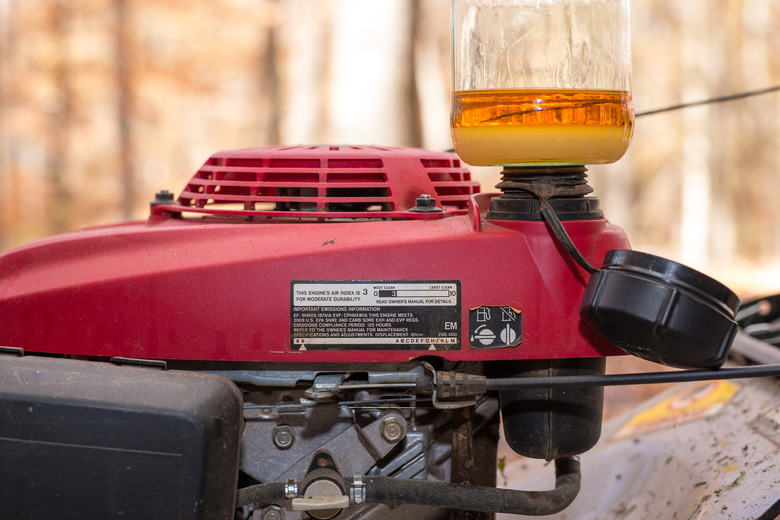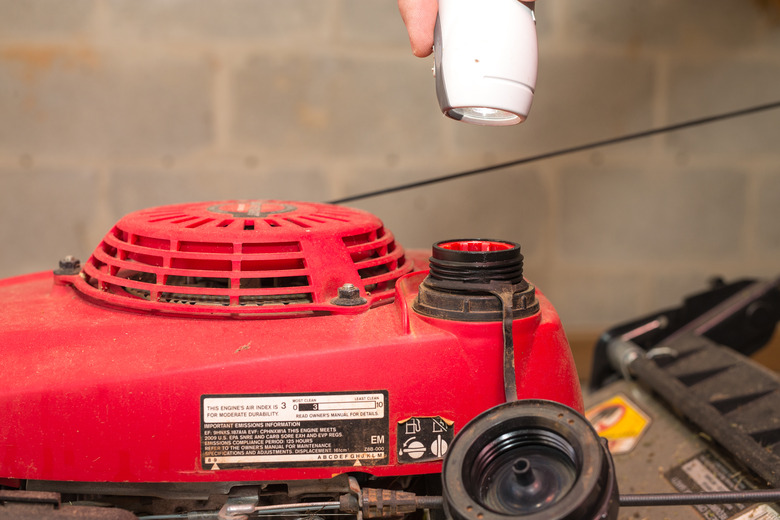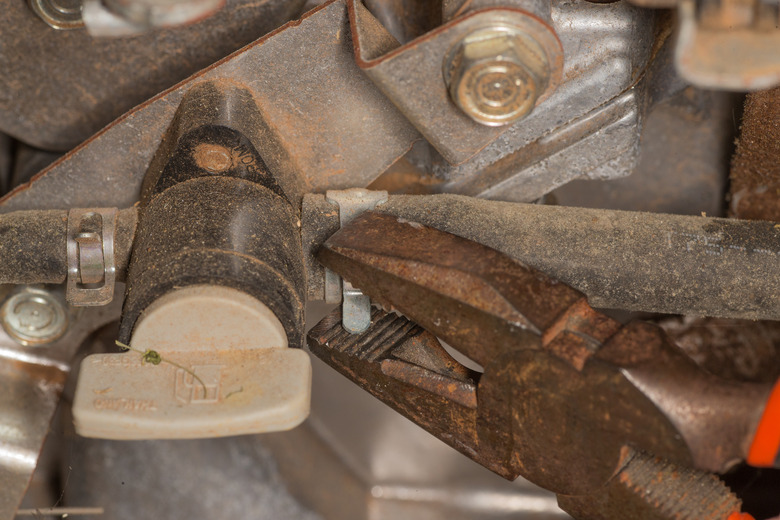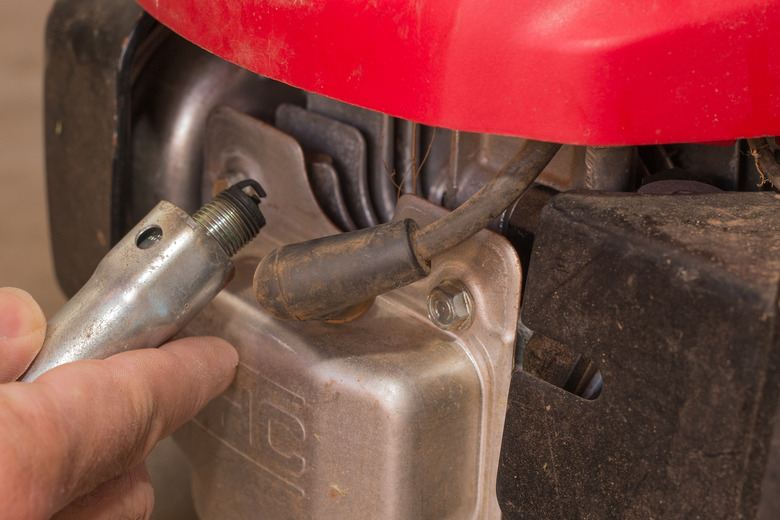How To Tell If There's Water In Your Lawn Mower Gas Tank
Water-contaminated fuel is just one reason why your lawn mower won't start or why it stalls, but it's a common one. Even if your mower wasn't left out in the rain — which happens surprisingly often — the fuel can collect condensation while it sits in storage. You may be able to spot water by looking in the gas tank, but poor engine performance is often all the evidence of water contamination you need.
Note Engine Performance
Note Engine Performance
Your first indication that there may water in the gas tank is often the performance of the lawn mower. It might be running normally but will suddenly sputter or stall, as if it were out of fuel. You may also notice an unusual amount of smoke coming from the engine, which is the result of poor combustion in the piston chamber. If you're having a hard time starting the mower after a long period in storage or after the mower has been in the rain, that's also a fairly conclusive indication that the fuel is contaminated.
Check the Tank
Check the Tank
Water is heavier than gasoline, so if there is any in the tank, it will sink to the bottom. You can usually spot it with a flashlight. Move the mower into the shade or bring it indoors, and then shine the flashlight into the tank. Water forms globules in the gasoline, and these are usually visible — they look like bubbles. If you aren't sure, loosen the fuel line and let a few drops of fuel drip onto a scrap piece of wood or metal. If there's water in the fuel, it will bead up.
Draining Contaminated Fuel
Draining Contaminated Fuel
Once you've determined that the fuel is contaminated, you need to drain the fuel tank. Because gas and water remain separated, you may be able to salvage some of the fuel, but it's usually best to collect all the fuel in an approved container and take to your local disposal facility for recycling. Before refilling the tank with fresh fuel, disconnect the fuel line, and blow compressed air through it to dry it out. Then reconnect it. You should also dry the tank, either by blowing compressed air into it or letting it air dry overnight.
Servicing Water-Contaminated Engines
Servicing Water-Contaminated Engines
If the engine was running poorly or wouldn't start — indicating water in the carburetor and combustion chamber — you may have to remove the carburetor and clean it. Beside causing poor performance, water also corrodes the sensitive metal parts of the carburetor. There could be moisture in the combustion chamber, as well. If so, it may degrade the lubrication of the piston. To remedy this, remove the spark plug; pour a teaspoon of engine oil into the hole, and, with the plug removed, turn the blade a few times to rotate the engine and coat the walls of the piston chamber. Wear gloves to protect your hands when handling the mower blade.




